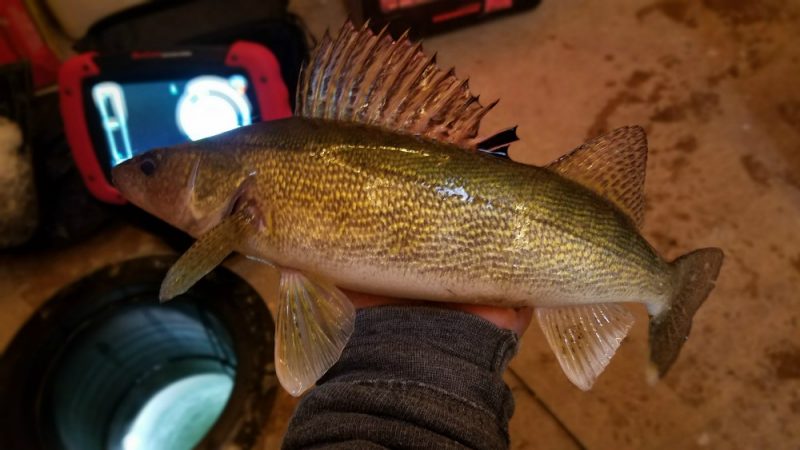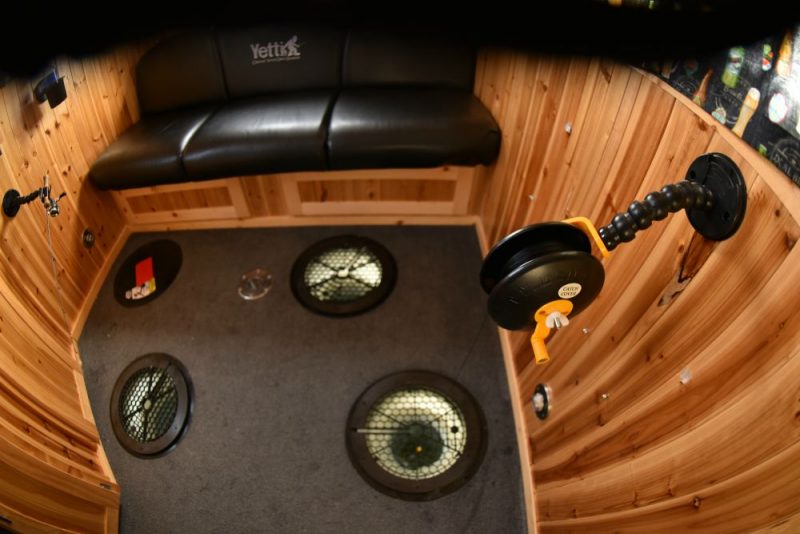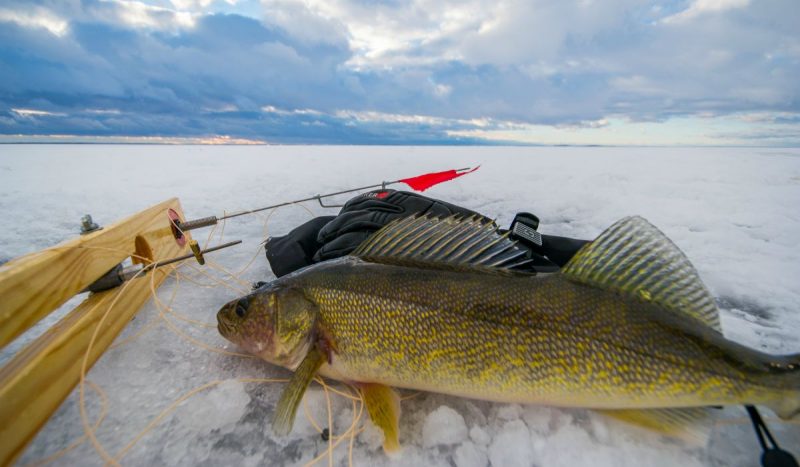Top 5 Set Line Solutions for Ice Fishing
Joel Nelson 12.19.17

If you read print and online articles to learn more about ice fishing, you know that a lot of space has been dedicated to the idea that mobility is the key to catching more and bigger fish — regardless of your target species. Heck, I’ve written my share of those articles.
Yet, even with laser-fast augers, lightweight lithium-powered sonar, and space-age flotation ice suits, we still occasionally end up riding out a bite from one location. Though the more productive play might be to “troll” hardwater by hole-hopping, factors such as high winds or extreme cold can make moving a challenge, especially if you’re fishing with one or more children.
With that in mind, I’ve been told that 80 percent of our ice fishing brethren chooses to wet a line inside an ice shelter. Increasingly, that’s in the form of a wheelhouse, where mobility is possible but often impractical. Still, even those in portable shelters avoid moving when at times it would likely be beneficial.
The challenge then becomes catching fish in whatever space you choose, knowing you won’t be venturing far from a home base. That’s where set-lines come in. Whether a bobber-rod, deadstick, tip-up, or rattle-reel, deploying these stationary offerings in a strategic manner will lead to success, even if you can’t go to the fish.

All set lines have their place and time, but too often people get attached to whatever they have at the ready. Here’s where and how you should be fishing the top five types:
- Slip Bobbers: Perhaps the most enduring form of stationary fishing, employing slip bobbers is most effective inside a very warm portable, or permanent house. Freeze-up issues on the line and in the hole make this a difficult presentation in extreme cold. I prefer the foam bobbers you can trim to fit the bait you’re using, which prevents too much flotation from alerting a fish to your presence. Bobbers still will pin down a bait, especially if putting a sinker close to the free-swimming minnow you’re using, requiring minnows to struggle against that resistance. This is good when you’d prefer that presentation, especially for larger minnows, but it’s bad if you want your minnow to have the utmost freedom.

- Deadstick: This technique springs from rod designs that bear its name, namely a rod with extremely flimsy tip sections giving way to a hefty backbone. The idea is that you’re giving the minnow some leeway, allowing it to swim freely and greatly depress the rod tip section at its leisure. Instead of reading a bobber, you read the rod tip, which is excellent if you’re in a shelter with less people, and you’d like to cover both ends of the house. Jig at one end, and watch the rod tip on the other, as typically a bobber setup would be below the floor and out of view.

- Rattle Reels: These are standard accessories for most permanent shelters, and great to have with larger groups, but people often rely on them too heavily in such situations. Depending on the bite, they’re a great way to offer live bait to wary fish. That said, you’re selling yourself short if you don’t vary the spread, which includes mixing up shapes, sizes, and colors of the jig or lure you’re using, along with the bait of choice. Not to mention, rattle reels work even better if you can actively jig in a few holes to draw fish into your area. Noisy rattle or vibration-heavy search baits will often bring fish in, allowing them to close on less-aggressive presentations offered by your rattle reels. While jigging operations can be added to any set line situation, they work well in combination with large houses and lots of holes; you can really use the number of set-up or installed rattle reel offerings to dial in the bite and narrow down what the fish are liking.

- Tip-ups: Think tip-ups in situations when you’re fishing a large piece of structure, or along a break. Plain and simple, tip-ups cover ground, and act almost like a trail camera does for deer hunters. I prefer tried and true models such as the venerable Beaver Dam original (below), and in extreme cold, opt for its counterpart in the insulated round model to keep the holes from freezing up and rendering your tip-up inoperable. Both allow you to scout different portions of the structure you’re not currently fishing, and provides valuable intel in the event that you’d like to move. It also helps dial in the timing of the bite, with species like walleyes especially moving their way up to feed at night, and back down into the depths during daylight hours. Of course, tip-ups can be your entire strategy if you’re looking simply to gain more information on fish locations in general. They’re not great for panfish, but if you’re targeting larger predators, then consider tip-ups as an ample way to cover more ice-estate.

- Tip-downs: If tip-ups are the stationary bite detector for predators, tip-downs are their panfish equivalent, but completely different in design in operation. Tip-downs (below) work for perch, bluegills and crappies, on open-ice or in a permanent shelter, by perfectly balancing a rod horizontally on a pivot in front of the reel seat so as to most easily detect a strike. Think of a rod holder paired with a deadstick, but with the option to point directly down the hole, providing nearly zero resistance to finicky panfish that grab the bait. An angler typically watches several of these nearby, waiting for extremely pressured panfish to slowly take a bait and swim away until the hook is set.

Remember: Especially during primetimes and low-light periods, be ready to tend a variable spread of differing bait options and delivery methods with set lines to make the most of your time on the water. While runnin’ and gunnin’ is the norm these days on hardwater, set lines can be extremely effective when used properly.


